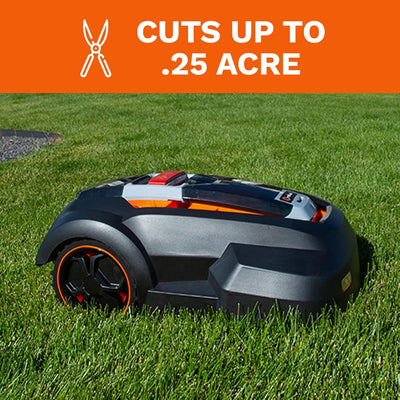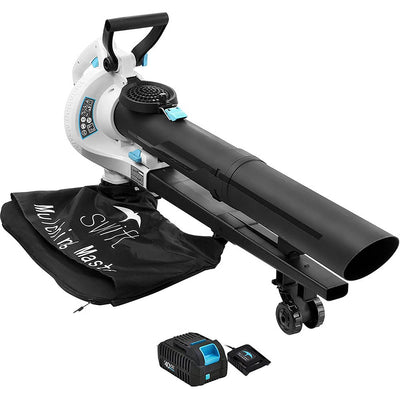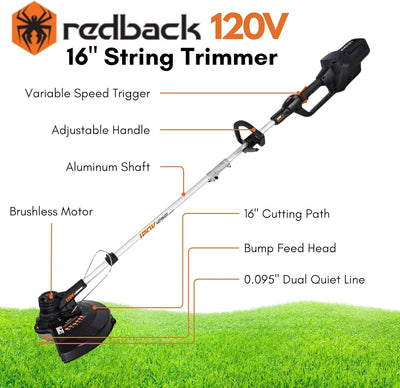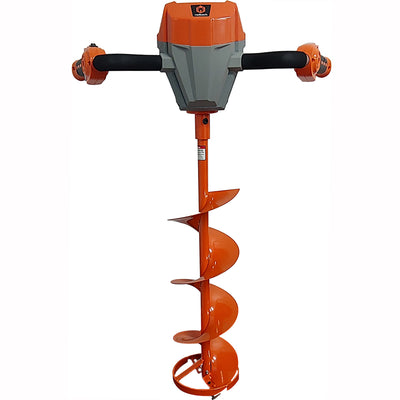Lawn Mowing FAQs
Maintaining a healthy and beautiful lawn needs regular mowing. However, many homeowners question the best practices for mowing their lawns.

Let's answer some of the most frequently asked questions about lawn mowing.
How often should I mow my lawn?
The answer to this question depends on several factors, such as the type of grass, the weather, and the season. You should mow when it is about one-third taller than its ideal height. For example, if your lawn should be two inches tall, you should mow it when it reaches three inches.
If you're tired of spending hours in the sun mowing, a robot lawn mower might be just what you need. With its advanced technology, a robot mower can effortlessly navigate your yard. You just have to schedule how often you want the lawn mowed and set a cutting height.
What is the ideal height for my lawn?
The ideal height range for your grass largely depends on the type of grass that you have. Generally, most grass types thrive when kept between one to three inches in height. It's important to avoid mowing too short, as this can do more harm than good. When cut too short, grass can weaken and become more vulnerable to disease and pests. It can result in brown and patchy spots on your lawn that can be difficult to repair. Therefore, mowing regularly and at the right height is important to maintain a healthy and vibrant lawn.
Should I mow my lawn when it's wet?
Mowing can be difficult, especially when it's wet outside. It may clump together, clog the mower, and cut unevenly. It may also cause damage to the mower blades. Wet grass increases the risk of disease in lawns, as it can promote the growth of harmful microorganisms. Mowing wet grass can lead to diseases like brown patches and dollar spots. It's best to wait for the lawn to dry before mowing it.
Should I bag or mulch my grass clippings?
Mulching your grass clippings is important, as it can benefit your lawn. It involves leaving the grass clippings on the lawn after mowing, which can help return nutrients to the soil. This process can help your lawn grow healthier and save time and effort, as you won't have to dispose of the clippings. However, if your lawn is experiencing disease or you have excessive clippings, it may be better to bag them instead. It prevents the spread of disease and maintains your lawn's appearance. So, while mulching can be a great option for most lawns, it's important to consider your specific lawn's needs and to make the best decision for its health and appearance.
What type of lawn mower should I use?
The lawn mower you should use depends on the size of your lawn and the type of grass you have. If you're looking for a lawn mower that is environmentally friendly, quiet and requires minimal maintenance, consider a battery-powered push mower or a robot mower. Battery-powered push mowers are incredibly easy to use. They are also much quieter than gas-powered mowers and don't emit harmful fumes into the environment. Meanwhile, robot mowers are perfect for those who want to automate their lawn maintenance completely. They are designed to mow your lawn independently and can be controlled using an app, saving you a lot of time and effort.
What mower is safe for kids and pets?
Robot mowers are a great lawn care option for homeowners with kids and pets. They provide a safe cutting process without risk of injury from contact with mower blades or debris. Models like the Redback MowRo Robot Mower have sensors to detect and avoid obstacles, reducing the risk of the mower accidentally running over a pet or other small animal. Additionally, they produce less noise and emissions than traditional mowers, making them a better choice for the environment and your family's health. Overall, robot mowers are a safe and effective solution to keep your lawn looking great without sacrificing safety or convenience.
Is a sharp lawn mower blade important?
Yes, a sharp lawn mower blade is very important. A dull blade can damage your grass by tearing it instead of cutting it cleanly. It can make your lawn more susceptible to disease and pests and can also give it a brown, ragged appearance. A sharp blade, on the other hand, will make a clean cut that promotes healthy growth and a polished look. It is recommended to sharpen your lawn mower blade at least once a year or more often if you have a large lawn or mow frequently.
What is the right mowing pattern?
There isn't necessarily a "right" or "wrong" way to do it regarding lawn mowing patterns. However, there are a few common patterns that you can follow to achieve a neat and attractive look for your lawn. Some popular mowing patterns include straight, diagonal, checkerboard, and circular patterns. Ultimately, the pattern you choose will depend on your personal preferences and the size and shape of your lawn. Switching up your mowing pattern from time to time is also a good idea to prevent your grass from developing ruts or growing in one direction.
How long should I wait to mow my lawn after fertilizing it?
It's best to wait at least 24-48 hours after fertilizing your lawn before mowing it. This will give the fertilizer enough time to settle into the soil and be absorbed by the grassroots. Mowing too soon after fertilizing could cause the nutrients to be removed from the grass blades before they have a chance to be absorbed, which would reduce the effectiveness of the fertilizer.
Is lawn edging necessary?
Whether lawn edging is necessary or not depends on your personal preference and your lawn needs. Lawn edging helps to create a clear boundary between your lawn and other areas, such as walkways or flower beds. It can help prevent grass from spreading into these areas and make maintaining a neat and tidy lawn easier. Additionally, lawn edging can create a more polished and professional look for your outdoor space. However, if you prefer a more natural and organic look for your lawn, or if you don't have any areas that need to be separated from the lawn, then lawn edging may be optional.
What are the best lawn edging tools, and how do you use them?
There are various lawn edging tools available, each with its own set of advantages and disadvantages. Some popular ones are manual edging shears, half-moon edgers, lawn edging spades, and cordless lawn edgers. Bladed trimmers, such as the Redback Swift 40V Cordless Dual Bladed Trimmer, can also be used for edging your lawn.
To use these tools, first mark the edge of the lawn, then cut along the marked line using the chosen tool, and finally remove any excess grass or debris from the edge for a clean and finished look.
You can achieve a lush, green lawn by following these tips and using the right tools.






